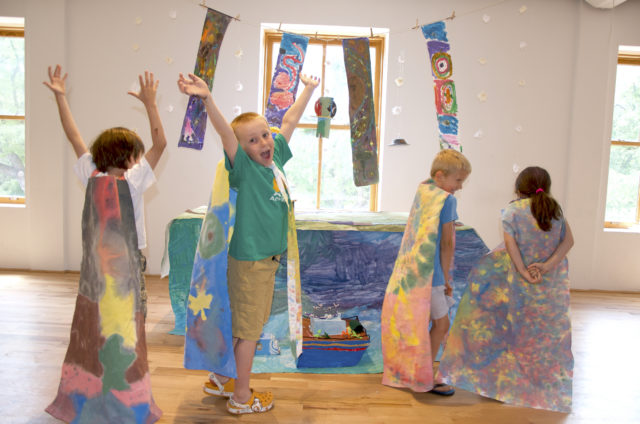
The Boulder Museum of Contemporary Art (BMoCA) has decided to switch up their camp model for 2017.
Instead of weeklong programs during the summer, BMoCA’s Young Artists at Work program will now offer five different day-long camps spread out through the calendar year.
“BMoCA is dedicating 2017 to families in our community, to showing that this is a place for them, year-round, with sustained programming,” says BMoCA’s director of education Nicole Dial-Kay.
These five camps will be during common times for winter break, fall break, spring break, and, of course, summer break.
The expanded day-camps program will be similar to the old model, in which kids work together to create an installation based on the camp’s given theme.
Dial-Kay says BMoCA plans to keep the focus on the fine arts and “building life-long integration into the arts for the kids that attend our camps, and any of our children’s programming.”
The camps are not typically medium specific, meaning that kids can explore multiple art media at one camp.
“We’re definitely pushing for experimentation in as many mediums as possible because art is truly interdisciplinary right now,” Dial-Kay says.
While the camp schedule may have changed, campers can still expect dedicated, art-loving educators and some familiar faces.
A consistent return educator, whom Dial-Kay says many children and parents come back to the camps for, is Heather Cherry, a local artist who works with paper as her main medium. Cherry, who has a master’s in art education from Tuft’s University, shines with pride when she talks about what children have created at past camps that she has taught at BMoCA.
Cherry says that she feels the camps are most successful when the kids are presented with a theme and are allowed the freedom to let their imagination roam within that idea. One such example was the “Can You Dig It?”camp where children made floor-to-ceiling sunflowers as part of their projects.
“I just think it’s really important for them to be able to take their ideas and think as big as possible,” Cherry says.
While the themes for most of the camps are still in the works, Dial-Kay says that the museum has a few set plans, such as the camp on July 16 in celebration of DТa del NiЦo (Children’s Day), which Dial-Kay says she hopes will also help celebrate Boulder County’s Latino community.
Cherry, who is a strong believer in theme-led camps, says she isn’t sure where her camps will go this year but is leaning toward the idea of a sea-based theme as a starting point.
“I’m always in awe of what they come up with, and what they wonder about,” Cherry says.
BMoCA is also hoping to work in collaboration with the University of Colorado’s Museum of Natural History and several other local institutions to have a citywide museum day.
Dial-Kay says that the thing that makes BMoCA’s camps so special is the fact that they are a working museum.
“We are a museum, the kids are in the museum, they’re interacting with the artwork, they’re seeing the artists, and that is a very different experience,” she says. “The other thing is, we only hire working artists who are dedicated to their practice. So they’re working with real artists and educators.”
Cherry says that working and teaching within the museum creates an immersive experience for the campers.
In true museum fashion, the Young Artists at Work campers will have their own miniature gallery opening, where kids can invite family and talk about (as well as show off) their hard work.
Cherry says that this step of talking about the work and explaining the process of creating their art [to others] is important “in terms of building confidence, in terms of your own vision and your own way of seeing the world and fostering that dialogue.”
Ultimately, with all of the museum’s programming, Dial-Kay has one clear mission in mind.
“I think the goal always is for everyone to know that art is for them, art is for everyone. There is not a specific age group or class that art was intended for. It can be for you.”














